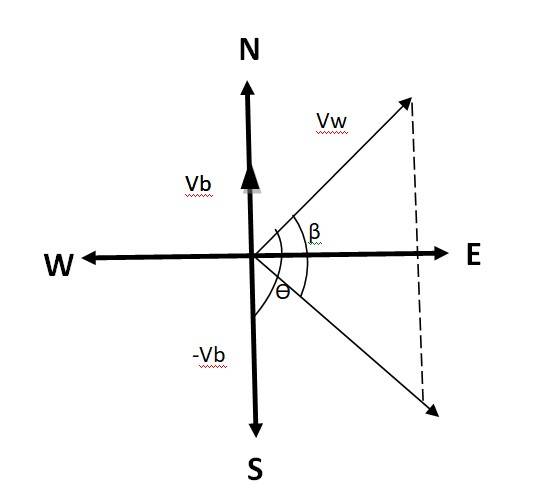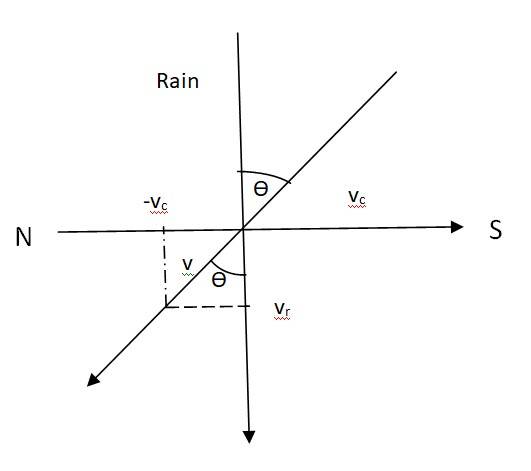Motion in a Plane
Get insights from 112 questions on Motion in a Plane, answered by students, alumni, and experts. You may also ask and answer any question you like about Motion in a Plane
Follow Ask QuestionQuestions
Discussions
Active Users
Followers
New answer posted
6 months agoContributor-Level 10
4.21:
(a) Velocity , = 10.0 ? m/s
Acceleration, = (8.0 ? + 2.0 ?) m s-2
We know = = 8.0 ? + 2.0 ?
= (8.0 ? + 2.0 ?)dt
Integrating both sides we get (t) = 8.0t ? + 2.0t ? + ,
Where, velocity vector of the particle at t =0
velocity vector of the particle at time t
But =
= dt
= (8.0t ? + 2.0t ? + )dt
Integrating both sides with the condition at t = 0, r =0 and at t =t, r = r
t + ½ 8.0 t2 ? + ½ 2.0 t2 ? = t + 4.0 t2 ? + t2 ?
Substituting the value of , we g
New answer posted
6 months agoContributor-Level 10
4.20
(a) The position is given by = 3. 0t ? − 2.0t 2 ? + 4.0 ?
The velocity v is given by = = (3.0t ? − 2.0t 2 ? + 4.0 ?)
= 3.0 ? – 4.0t?
Acceleration = = (3.0 ? – 4.0t?) = – 4.0?
(b) At t = 2.0s
= 3.0 ? – 4.0t?
The magnitude of velocity is given by = (3.02 +- 8.02)0.5 = 8.54 m/s
Direction, = = = 69.44
New answer posted
6 months agoContributor-Level 10
4.19
(a) The net acceleration of a particle in circular motion is always directed along the radius of the circle towards the centre (centripetal force), in the case of a circular uniform motion. Hence the statement is False.
(b) The centrifugal force direction is always along the tangent, hence the statement is True.
(c) In uniform circular motion, the direction of the acceleration vector points is always toward the centre of the circle. The average of these vectors over one cycle is a null vector. Hence the statement is True.
New answer posted
6 months agoContributor-Level 10
4.18 The radius of the loop, r = 1 km = 1000 m
Speed, v = 900 km/h = 250 m/s
Centripetal acceleration, AC = = 250 / 1000 m/s2 = 62.5 m/s2 = g = 6.37g
New answer posted
6 months agoContributor-Level 10
4.17 Given, the length of the string, l = 80 cm, No. of revolution = 14, Time taken = 25 s
We know Frequency, v = = Hz
Angular frequency = 2?v = 2 rad/s = 3.52 rad/s
Centripetal acceleration ac = r = m/s2 = 9.91 m/s2
The direction of acceleration is towards the centre.
New answer posted
6 months agoContributor-Level 10
4.16 We know for a projectile motion, horizontal range is given by
R = , where R is the horizontal range, u is the velocity and is the angle of projectile
So = 100/sin 2
The cricketer will only be able to throw the ball to the maximum horizontal distance when the angle of projection = 45 , = 100 …….(1)
The ball will achieve max height when it is thrown vertically upward. For such motion, final velocity v = 0
From the equation - =2gH, where acceleration a = -g, we get
0 - = -2gH, H = = = 50m
New answer posted
6 months agoContributor-Level 10
4.15 The speed of the ball, u = 40 m/s
Ceiling height, h = 25m
Since the ball is thrown, it will follow the path of a projectile. For projectile motion, the maximum height for a body projected at an angle is given by
h= , sin2 = (25 ,
Horizontal range is given by,=
R = = ((40 ) )/9.81 = 150.38m
New answer posted
6 months agoContributor-Level 10
4.14

The velocity of the boat = 51 km/h, the velocity of the wind = 72 km/h
Flag is fluttering in N-E direction, so the direction is N-E.
When the ship begins to sail towards North, the flag will flutter along the direction of relative velocity of the wind w.r.t. the boat.
The angle between & - = 90
tan = = =
tan-1( ) = 45.099
Angle with respect to East direction = 45.099 - 45 = 0.099
Hence the flag will flutter almost due East.
New answer posted
6 months agoContributor-Level 10
4.13 Swimming speed = 4 km/h, Width of the river = 1.0 km
Time required to cross the river = = h= 15 min
Speed of the river = 3 km/h
Distance covered by the river in 15 min = 3 = 750 m
New answer posted
6 months agoContributor-Level 10
4.12 Let Vc = Velocity of the cyclist
Vr = Velocity of the rain
If V is the relative velocity, the woman must hold her umbrella in the direction of V.
V = Vr + (-Vc) = 30 + (-10) = 20 m/s
Tan = = , = 18
Taking an Exam? Selecting a College?
Get authentic answers from experts, students and alumni that you won't find anywhere else
Sign Up on ShikshaOn Shiksha, get access to
- 65k Colleges
- 1.2k Exams
- 679k Reviews
- 1800k Answers

